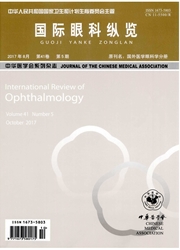

 中文摘要:
中文摘要:
除了传统的穿透性角膜移植术和角膜内皮植入术外,人工角膜植入术是一种严重性角膜疾病终末期光学增视性选择性治疗方法。人工角膜最常见的结构是柱镜一裙带型,即由中央透明光学柱镜和周围裙边支架两部分组成。支架材料良好的生物相容性是人工角膜植入成功的关键。随着高分子材料科学的发展,支架材料的种类愈加丰富,对生物相容性的要求也愈加提高。目前常见的人工角膜主要以无机、有机或/和生物材料作为支架,不同材料在实际应用中的相容性和优劣性有所差异,了解这些特性有助于提高人工角膜植入的成功率。
 英文摘要:
英文摘要:
The most common and traditional treatment options of corneal diseases are penetrating keratoplasty and corneal endothelium transplantation. Moreover, transplantation of keratoprosthesis is an oth- er important therapy method. The most common structure of keratoprosthesis is column lens-nepotism, which is constituted with a transparent optical mirror column in the centre and scaffold in the rim. The key of trans- plantation of keratoprosthesis lies in the bioeompatibility of stent materials. With the development of polymer material science, the kinds of stent materials are increasingly diverse, also the requirement of biocompatibili- ty is increasingly improved. The current common artificial corneas scaffolds are made with inorganic, organic or/and biological materials. The understanding of the biocompatibility, superiority and inferiority of the dif- ferent materials could improve the success rate of implantation of keratoprosthesis.
 同期刊论文项目
同期刊论文项目
 同项目期刊论文
同项目期刊论文
 期刊信息
期刊信息
